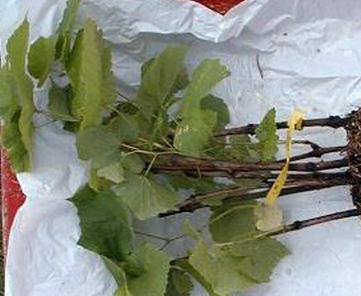
Grapes are a valuable culture that many summer residents dream of having in their garden. Its berries are very tasty. But, in addition to direct use in food, there are plenty of ways to use ripe berries. They make wine, juices, compotes and much more. Recently, as a result of the constant work of scientists, breeders, a lot of the most diverse varieties have been bred. Among them, there are those that have large fragrant berries, and valuable technical varieties, and those that are especially resistant to the main diseases of grapes. However, their cost is quite high. Therefore, having acquired one precious specimen and making sure of its excellent qualities, the owners begin to think about how to get more bushes that will bring the same delicious grapes. Propagation by green cuttings in this case is one of the most convenient and common ways. Planting ready-made seedlings in the ground does not usually cause any particular difficulties. But getting them yourself from an already growing bush is not easy.

When to cut?
In principle, the propagation of grapes with green cuttings can be performed at almost any time of the year. But in order to achieve the optimal result, it is advised to prepare the material in May – June, literally a couple of weeks before flowering. Young shoots should have gained enough strength for the subsequent independent life. The most important thing in the preparation of future planting material is to prevent even the slightest drying out to obtain viable grapes. Propagation by green cuttings should therefore begin with high humidity, namely in cloudy weather in the early morning or evening.
How to choose the material?
For cuttings suitable stepsons, young shoots of bushes, as well as the upper parts of twigs. Usually choose a part that contains 3-4 developed buds that can produce high-quality grapes in the future. Propagation by green cuttings begins with the preparation of green material. The trimmed twig must be shortened from above, just above the eye, and trimmed below 3-4 cm after the kidney. Vibrant green leaves are very important for subsequent rooting. If there are 3 promising buds on the shoot, leave 2 top leaves. If there are fewer of them, you need to leave one leaf, so that later it grows strong and strong grapes.
How to root?Propagation by green cuttings requires the preparation of sufficiently roomy dishes (for example, a cut-off container of 5 liters under water is suitable). It must be filled with an earthen mixture, in which half will be garden soil, and the other half will be compost. Holes must be made at the bottom of the container. Then, four young cuttings are placed in the corners of a pot prepared in this way. They need to be watered, and then well wrap the container with a plastic bag. Then the cuttings can be removed in a well-lit place and not be touched for about a couple of weeks while the grapes take root. Propagation by green cuttings will then consist in the care of small seedlings. It will be enough to open them once a week for ventilation and watering. And when noticeable new shoots appear, which will happen in about two months, the planting material can be transferred to the open ground. If the cuttings were started in June, then the future bushes will be in the open air in August and have time to root well before October and even form a tree trunk. In other cases, the seedling will have to be placed in greenhouse conditions.
Propagation of wild grapes by cuttings is carried out in a similar way. The most important thing here is to keep the cuttings cut. To do this, they must immediately be placed in a bowl of water and close it well to prevent evaporation of moisture.